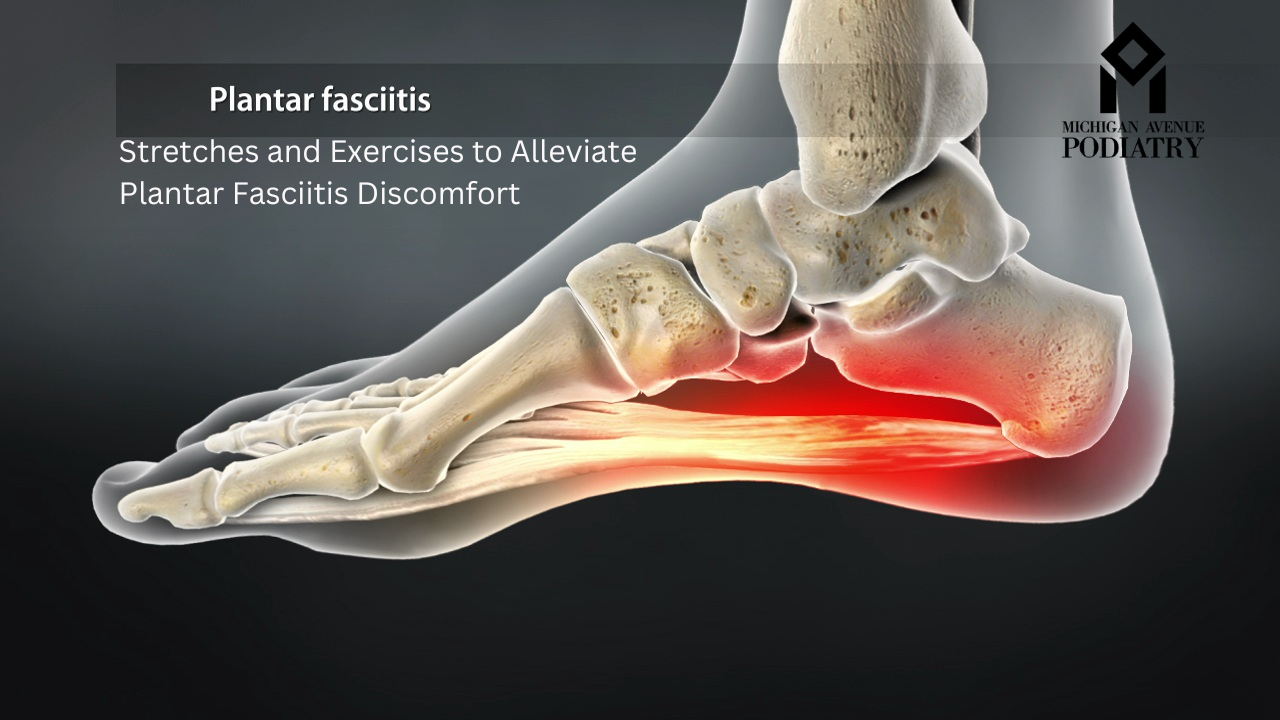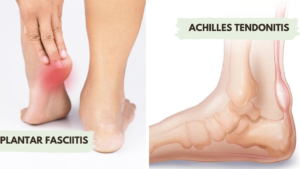Plantar fasciitis is a common foot condition characterized by inflammation and irritation of the plantar fascia, a thick band of tissue that runs along the bottom of the foot, connecting the heel to the toes. This condition can cause intense heel pain, especially with the first steps in the morning or after prolonged periods of rest. While plantar fasciitis can be debilitating, incorporating targeted stretches and exercises into your daily routine can help alleviate discomfort and promote healing. In this blog post, we will explore some effective stretches and exercises recommended by podiatrists and foot doctors to manage plantar fasciitis and regain mobility and comfort in your feet.
Understanding Plantar Fasciitis:
Before diving into the stretches and exercises, let’s briefly discuss the causes and symptoms of plantar fasciitis. Plantar fasciitis typically develops as a result of repetitive strain or overuse of the plantar fascia, leading to micro-tears and inflammation. Common risk factors for plantar fasciitis include:
- Overpronation or high arches: Foot mechanics that put excessive strain on the plantar fascia.
- Tight calf muscles: Restricted flexibility in the calf muscles can contribute to increased tension on the plantar fascia.
- Obesity: Excess body weight can place added stress on the feet and exacerbate plantar fasciitis symptoms.
- Poor footwear: Wearing shoes with inadequate support or improper arch support can contribute to the development of plantar fasciitis.
Symptoms of plantar fasciitis may include heel pain, particularly upon waking up in the morning or after prolonged periods of rest, as well as pain that worsens with activity and subsides with rest.
Stretches and Exercises for Plantar Fasciitis Relief:
- Calf Stretch:
- Stand facing a wall with your hands against the wall at shoulder height.
- Step one foot back, keeping it straight with the heel on the ground.
- Lean forward, bending your front knee while keeping the back leg straight.
- Hold the stretch for 30 seconds, then switch legs. Repeat 2-3 times on each side.
- Plantar Fascia Stretch:
- Sit on a chair and cross one foot over the opposite knee.
- Using your hand, gently pull back on the toes of the crossed foot, stretching the arch of the foot.
- Hold the stretch for 15-30 seconds, then release. Repeat 2-3 times on each foot.
- Towel Stretch:
- Sit on the floor with your legs extended in front of you.
- Place a towel around the ball of one foot and hold onto the ends of the towel with both hands.
- Gently pull the towel towards you, stretching the toes and the bottom of the foot.
- Hold the stretch for 15-30 seconds, then release. Repeat 2-3 times on each foot.
- Toe Curls:
- Sit in a chair with your feet flat on the ground.
- Keeping your heels on the ground, curl your toes as if you’re trying to pick up a small object with them.
- Hold the contraction for 5-10 seconds, then relax. Repeat 10-15 times.
- Arch Roll:
- Sit in a chair and place a small round object, such as a tennis ball or a frozen water bottle, under the arch of your foot.
- Roll the object back and forth under your foot, applying gentle pressure.
- Continue for 1-2 minutes, then switch feet.
Consulting a Podiatrist:
While these stretches and exercises can provide relief for plantar fasciitis, it’s essential to consult with a podiatrist or foot doctor for a comprehensive evaluation and personalized treatment plan. In addition to stretching and exercises, treatment for plantar fasciitis may include:
- Orthotic inserts: Customized shoe inserts designed to provide support and alleviate pressure on the plantar fascia.
- Physical therapy: Targeted exercises and modalities prescribed by a physical therapist to improve flexibility, strength, and mobility.
- Night splints: Devices worn while sleeping to stretch the plantar fascia and Achilles tendon.
- Corticosteroid injections: Injections of corticosteroids to reduce inflammation and pain in the affected area.
Conclusion:
Plantar fasciitis can be a painful and debilitating condition, but with the right approach to treatment and management, it is often manageable and can be overcome. By incorporating stretches and exercises targeting the calf muscles, plantar fascia, and surrounding tissues into your daily routine, you can improve flexibility, reduce tension, and alleviate discomfort in your feet. Remember to consult with a podiatrist or foot doctor for personalized guidance and treatment recommendations tailored to your specific needs. With patience, persistence, and proactive foot care, you can regain mobility and enjoy life without the limitations of plantar fasciitis.




